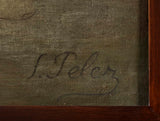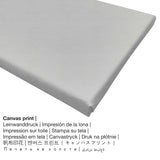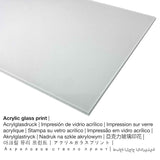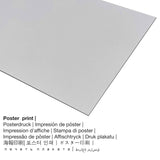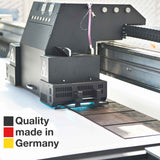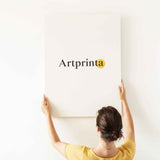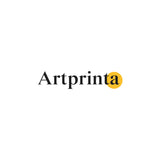Fernand Pelez, 1896 - La Vachalcade - mbipụta nka mara mma
Ụtụ gụnyere. Mbupu gbakọrọ na ndenye ọpụpụ.
Product nkọwa
The nkà nke oge a ihe omimi La Vachalcade onye na-ese ihe mere ya Fernand Pelez in 1896. A na-ese ụdị ihe osise ahụ na nha: Ogologo: 188 cm, obosara: 245 cm. Oil, Canvas (material) was used by the artist as the technique for the masterpiece. Signature - Bottom right: "f.Pelez" was the masterpiece's original inscription. This artwork is in the the Petit Palais - Musée des Beaux-arts de la Ville de Paris collection in Paris, France. With courtesy of - Petit Palais Paris (ọha na eze).Ebe E Si Nweta nke ihe osise:. N'elu nke ahụ, nhazi nke mmepụta dijitalụ na-abanye odida obodo usoro ma nwee oke nke 4: 3, nke pụtara na ogologo bụ 33% ogologo karịa obosara.
What does the website of the Petit Palais - Musée des Beaux-arts de la Ville de Paris say about the artwork painted by Fernand Pelez? (© Nwebiisinka - nke Petit Palais - Musée des Beaux-arts de la Ville de Paris - Petit Palais - Musée des Beaux-arts de la Ville de Paris)
In front of a light background, align twelve children in a compact frieze. They are dressed with oversized costumes for their size, some wearing hats or masks. At the ends of the composition, two children hold sticks that are hanging lanterns. Foremost, a boy plays the drum. Behind them can be read on a banner topped with a crown of flowers the word "Misere".
The Vachalcade was the carnival and satirical procession Montmartre whose first edition was held in February 1896. Created in opposition to the Parisian procession du Boeuf Gras, this parade is that the poor and the artists involved in the creation of costumes and tanks. The emblem is the mad cow which symbol the plight of artists. The Vachalcade is thus the contraction of the words "cow" and "ride".
Genre scene, Carnival, Disguise - travesty Child Poverty - Poverty, Mask, Drum
Nkọwa gbasara nka
| Aha nke eserese ahụ: | "La Vachalcade" |
| Nhazi nka: | sere |
| Nhazi nka: | nkà nke oge a |
| Nhazi oge: | 19th narị afọ |
| Emepụtara na: | 1896 |
| Ogologo afọ nka nka: | 120 afọ |
| Ọkara nke ihe osise izizi: | Mmanụ, Canvas (ihe) |
| Ogo nke ọrụ nka izizi: | Ogologo: 188 cm, obosara: 245 cm |
| mbinye aka izizi nka: | Signature - Bottom right: "f.Pelez" |
| Ụlọ ihe ngosi nka / ebe: | Petit Palais - Musée des Beaux-arts de la Ville de Paris |
| Ebe ebe ngosi nka: | Paris, France |
| Ebe nrụọrụ weebụ ihe ngosi nka: | www.petitpalais.paris.fr |
| License: | ngalaba ọha |
| Site n'aka: | Petit Palais Paris |
metadata nka nka
| Ihe nkiri: | Fernand Pelez |
| Ọrụ onye na-ese ihe: | onye na-ese ihe |
| Otu nka: | omenkà nke oge a |
| Afọ ọnwụ: | 65 afọ |
| A mụrụ: | 1848 |
| Obodo: | Paris |
| Afọ nwụrụ: | 1913 |
| Obodo ọnwụ: | Paris |
Họrọ ngwa ngwaahịa ịchọrọ ịnwe
In the dropdown lists next to the product you can pick your favorite size and material. The following sizes and materials are the options we offer you for individualization:
- Mbipụta iko acrylic (nke nwere ezigbo mkpuchi iko): An acrylic glass print, often referenced as a UV print on plexiglass, will convert your selected original artwork into beautiful décor and is a great alternative to dibond or canvas prints. Your artwork is custom-made with the help of modern UV printing machines. Our real glass coating protects your chosen fine art print against light and external influences for many decades.
- Mbipụta akwụkwọ mmado (ihe kwaaji): Our poster print is a UV printed flat canvas paper with a granular finish on the surface. Please note, that depending on the absolute size of the poster print we add a white margin of something between 2-6cm around the print motif, which facilitates the framing with a custom frame.
- Mbipụta kwaaji: A printed canvas mounted on a wood stretcher frame. The printed canvas produces a familiar and enjoyable look. Your printed canvas of your favorite artwork will allow you to transform your into a large artwork as you know from art galleries. Canvas Prints have the advantage of being relatively low in weight. That means, it is easy to hang up the Canvas print without the help of additional wall-mounts. Canvas prints are suitable for any type of wall.
- Aluminom dibond (ọkpụkpụ ọla): Mbipụta Aluminom Dibond bụ mbipụta na ígwè nwere ezi mmetụta miri emi - maka echiche nke oge a na elu na-enweghị atụ.
Nkọwa akụkọ ahaziri ahazi
| Nkewa ngwaahịa: | nka nka |
| Usoro mmeghari: | mmeputakwa n'ụdị dijitalụ |
| Usoro mmepụta: | Mbipụta UV / dijitalụ |
| Production: | German mmepụta |
| Ụdị ngwaahịa: | mmepụta ihe na-achọ |
| Ngwaahịa were: | ihe ndozi ụlọ, mkpokọta nka (mmepụta) |
| Ndozi onyonyo a: | nhazi odida obodo |
| Ụdị anya: | 4: 3 ogologo ruo obosara |
| Mmetụta nke akụkụ akụkụ: | ogologo bụ 33% ogologo karịa obosara |
| Akwa mmeputakwa dị: | ígwè obibi akwụkwọ (aluminium dibond), ebipụta canvas, mbipụta enyo acrylic (nwere ezigbo mkpuchi iko), mbipụta akwụkwọ mmado (akwụkwọ kwaaji) |
| Nhọrọ nke Canvas Mbipụta (akwa akwa na etiti ihe ndọtị): | 40x30cm - 16x12", 80x60cm - 31x24", 120x90cm - 47x35", 160x120cm - 63x47" |
| Mbipụta iko acrylic (nwere ezigbo mkpuchi iko) dị iche iche: | 40x30cm - 16x12", 80x60cm - 31x24", 120x90cm - 47x35", 160x120cm - 63x47" |
| Nhọrọ nke mbipụta akwụkwọ mmado (akwụkwọ kwaaji): | 40x30cm - 16x12", 80x60cm - 31x24", 120x90cm - 47x35" |
| Mbipụta nke aluminom (ihe aluminom): | 40x30cm - 16x12", 80x60cm - 31x24", 120x90cm - 47x35" |
| Nhazi nke nnomi nka: | biko buru n'uche na ngwaahịa a enweghi etiti |
Ederede iwu: We try what we can to describe our products with as many details as possible and to showcase them visually on the various product detail pages. Although, the tone of the print products and the print result may differ marginally from the presentation on your device's screen. Depending on the settings of your screen and the quality of the surface, colors can unfortunately not be printed as exactly as the digital version. Bearing in mind that all the art reproductions are printed and processed manually, there may as well be slight deviations in the exact position and the size of the motif.
© nwebisiinka, Artprinta.com (Artprinta)

